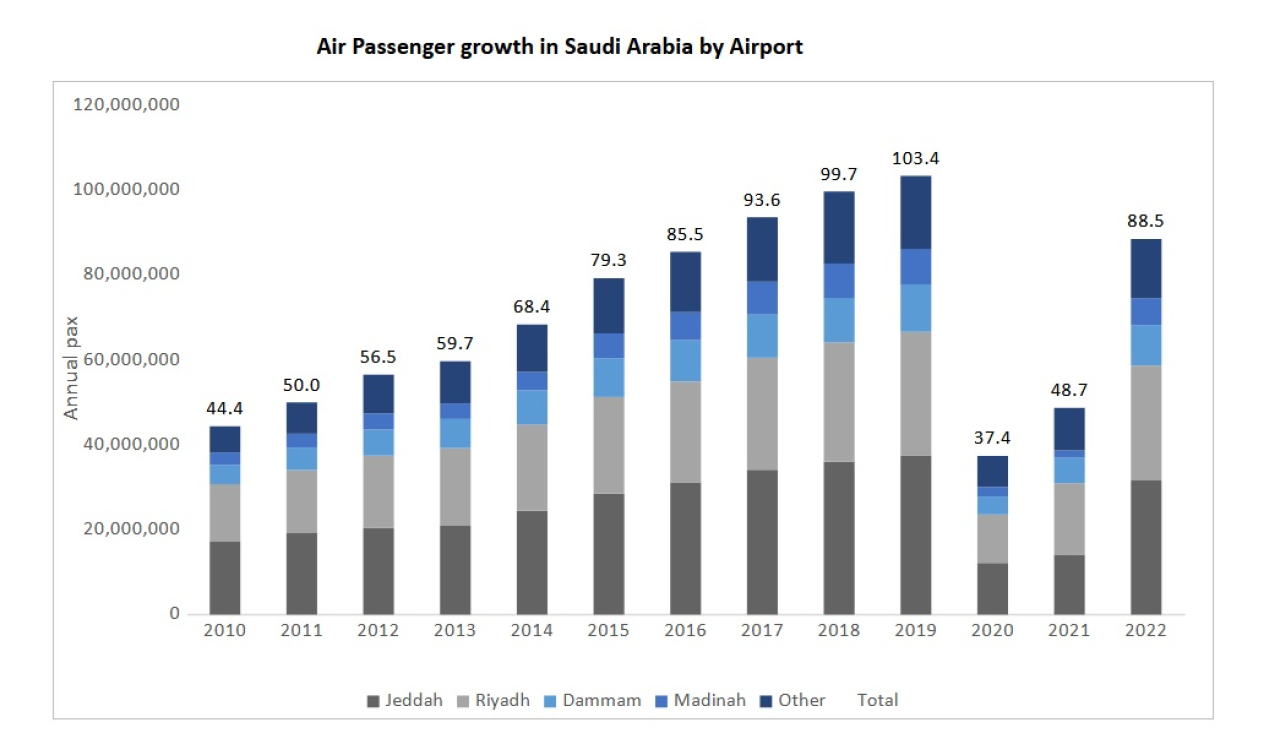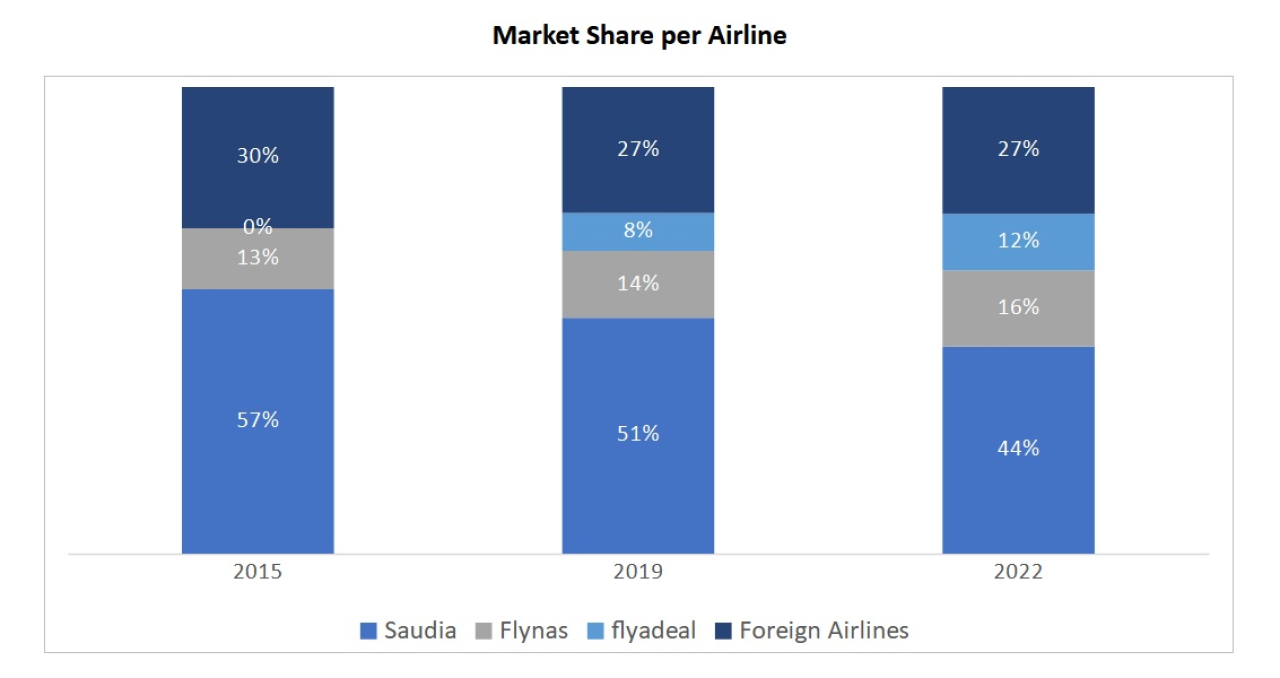How Saudi Arabia Aims to Deliver 330m Passengers a Year
Dion Zumbrink
November 15, 2023

© Riyadh Air
Two weeks ago, Saudi Arabia announced a new aviation policy. It will encourage industry growth and improve the landscape for investors to step into the market, given that $100 billion in aviation investment is earmarked until 2030. A closer look into the market clearly shows the opportunities in the next decade.
Traffic growth in the kingdom in the previous decade has been impressive. In 2010, just over 44 million passengers were handled at Saudi Arabia’s airports. Nine years later, in 2019, this had increased to over 100 million.
As can be seen below, growth was across the board; from the country´s four largest airports as well as in smaller secondary airports. As everywhere, the COVID19 pandemic resulted in declines in 2020 and 2021, but recovery started in 2022, and in 2023 this has continued with the first half of the year recording 26% additional flights compared to the same period in 2022.

© Dion Zumbrink
Traffic increases over the years have been facilitated by strong population growth at a CAGR of 2.2% from 2012 to 2022, according to World Economics Research. Economic growth has also outperformed the overall Middle East in the last decade.
All this came about without the extra driving forces expected in the upcoming decade. Up until now, Saudi Arabia acted mainly as an internal Middle East hub providing connections for pilgrimage events and labor immigrant countries as can be seen below.

© Dion Zumbrink
The Future Potential
Things are about to change with several drivers expected to triple the traffic by 2030. Firstly, realizing the need to reduce its reliance on oil revenue and to diversify its economy, Saudi Arabia has started to promote non-oil sectors, such as manufacturing, tourism, and technology. This is part of Vision 2030, a long-term economic strategy launched in 2016 that aims to transform the country's economy with tourism playing a key role.
The tourism sector in Saudi Arabia is expected to grow at an average of 11% annually over the next decade, making it the fastest-growing travel and tourism market in the Middle East, according to the World Travel & Tourism Council.
Large projects include a new luxury resort NEOM, the Red Sea Project, the exploitation of various ancient archaeological sites, and the mountainous Asir region. Visa policies have already changed to facilitate international tourism with e-visas for tourism now available for 57 countries.
International Tourism a New Driver
The growth seen in the past decade does not include any international tourism which will form a completely new market. In addition, there will be a greater propensity to travel by a young and increasingly wealthy population.
In 2022, Saudi Arabia said it was aiming to reach 330 million annual passengers by 2030, three times the 2019 level. Part of the strategy includes the creation of new airlines such as Riyadh Air. This will facilitate tourism, with links to many international destinations, while driving transfer traffic. The country will benefit from the same geographic advantages as the current main Middle East hubs like Dubai International, and Hamad International airports.
Airport upgrade projects are inevitable to support this future growth and play their role. Large expansions in Riyadh, Dammam, and secondary cities such as Al Abha have already been presented. Private sector participation is also sought with the launch, in 2024, of processes for 30-year concessions for Abha, Hail, Gassim, and Taif airports.
Airline Developments
Meanwhile, the airline market comprises of Saudia as the main flag carrier and hub airline, its low-cost subsidiary Flyadeal which started operations in 2017, and another low-cost airline Flynas. In 2022, Saudia carried nearly 38 million passengers while Flynas and Flyadeal flew 13 million and 11 million respectively.
Since the pandemic, both Flynas and Flyadeal have received additional aircraft and increased their share in the market.

© Dion Zumbrink
The outstanding orders underline the seriousness of Saudi Arabia’s goal of 330 million passengers. Saudia has 36 short-haul and 39 long-haul aircraft on order and the long-term goal of Flyadeal is to have 100 aircraft by 2030, nearly tripling its current capacity.
The Flynas fleet now consists of 51 aircraft with 88 further A320 orders to be delivered. A further 120 aircraft orders are contemplated which would give the airline the largest fleet in the Middle East.
The new airline being set up—Riyadh air, based in Riyadh—will have a fleet consisting of B787 wide-body aircraft. It will operate both domestic and international flights. The idea is that, in the future, Saudia will cater more to religious tourism, while the new airline will focus on business, transfer, and the expected international tourism influx.
